The trucking industry serves as the backbone of American commerce, with millions of professional drivers traversing highways daily to deliver goods across the country. For drivers who face mobility challenges due to age, injury, or disability, maintaining their career in trucking can present unique obstacles. Semi truck mobility scooters have emerged as a revolutionary solution, enabling professional drivers to continue their livelihood while ensuring safety and independence during their journeys.
Professional truck drivers often spend weeks away from home, making frequent stops at truck stops, shipping facilities, and distribution centers. When mobility becomes limited, these routine activities can transform from simple tasks into significant challenges. The introduction of specialized mobility solutions designed specifically for the trucking environment has opened new possibilities for drivers who might otherwise be forced to leave their profession.
Understanding the Need for Mobility Solutions in Trucking
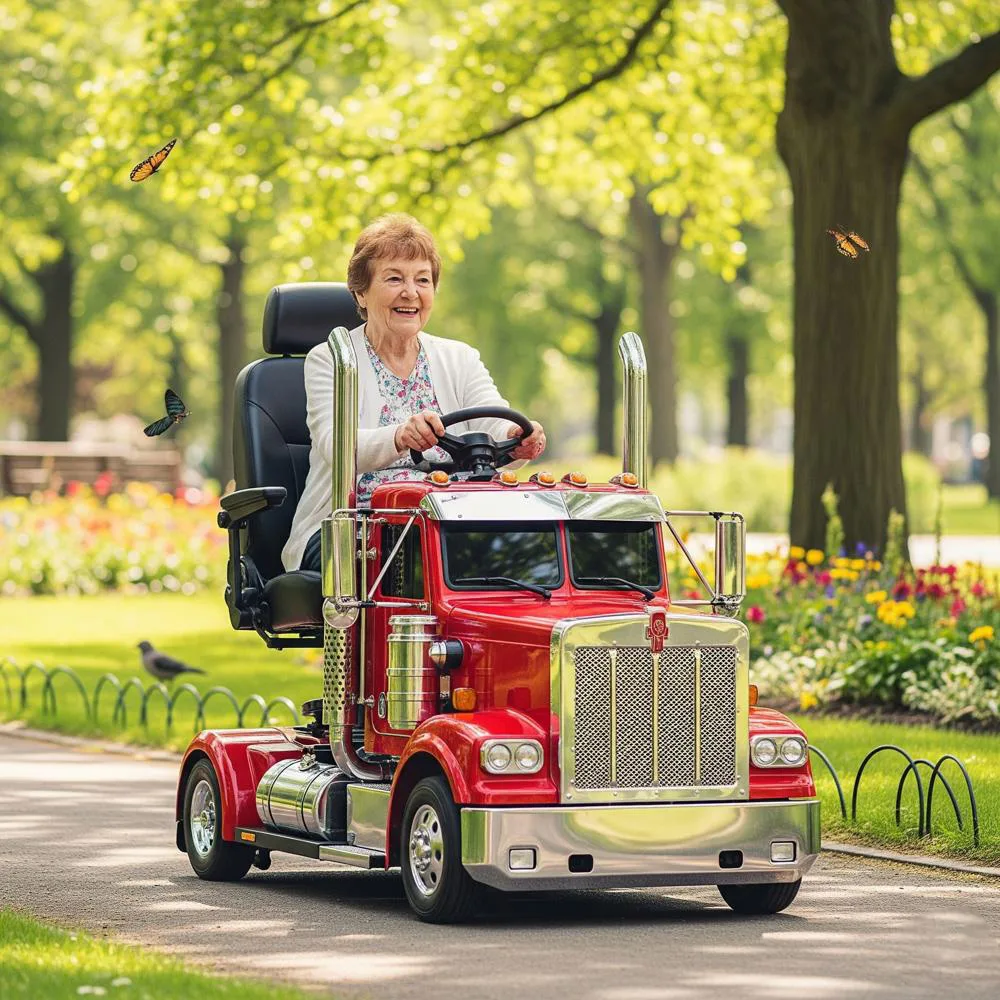
The trucking profession demands physical capability for various tasks beyond simply driving the vehicle. Drivers must conduct pre trip inspections, secure cargo, navigate large parking areas, and walk considerable distances within shipping facilities. These activities become increasingly difficult for individuals experiencing mobility limitations due to conditions such as arthritis, back injuries, leg problems, or other physical challenges.
Traditional mobility aids often prove inadequate for the trucking environment. Standard wheelchairs and walkers lack the portability and storage efficiency required for life on the road. Additionally, the uneven surfaces, long distances, and weather conditions encountered at truck stops and shipping facilities demand more robust mobility solutions.
Semi truck mobility scooters address these specific challenges by providing portable, durable, and efficient transportation for drivers with mobility needs. These specialized devices are engineered to fit within the confined spaces of truck cabs while offering the performance necessary for navigating the diverse environments encountered during professional driving routes.
Types of Semi Truck Mobility Scooters
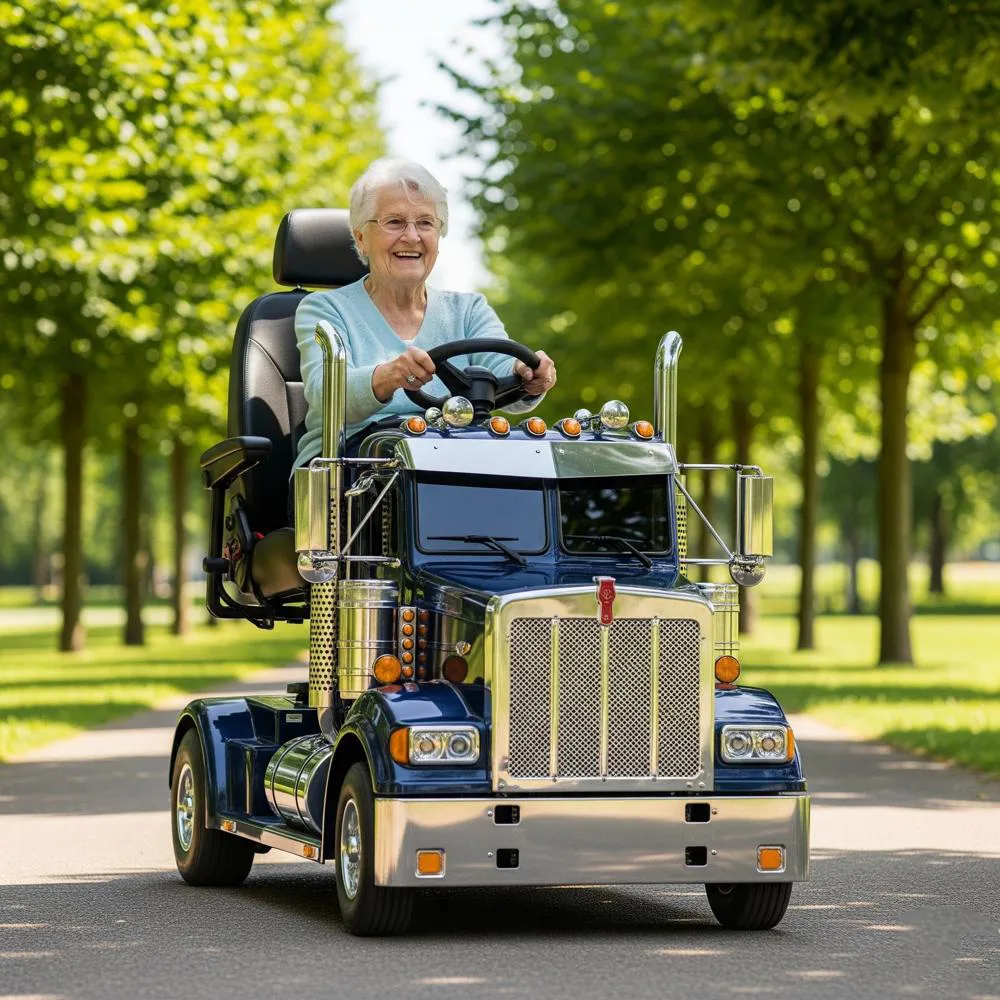
Foldable Lightweight Models
Foldable lightweight mobility scooters represent the most popular choice among professional drivers due to their exceptional portability and storage efficiency. These units typically weigh between 35 to 60 pounds and can be quickly disassembled into manageable components. The lightweight design allows drivers to easily lift and store the scooter within their truck cab or sleeper compartment without requiring additional assistance.
The folding mechanism usually involves simple release levers or quick disconnect features that allow the scooter to separate into two or three main pieces. The heaviest component typically weighs no more than 30 pounds, making it manageable for most drivers to handle independently. When folded, these scooters occupy minimal space, often fitting into areas no larger than a large suitcase.
Performance characteristics of lightweight models include speeds ranging from 3 to 5 mph and ranges of 8 to 15 miles per charge. While these specifications might seem modest, they prove more than adequate for the typical distances encountered during truck stop visits and facility navigation.
Heavy Duty Models
Heavy duty semi truck mobility scooters cater to drivers requiring enhanced performance and weight capacity. These units typically support users weighing up to 400 pounds and offer superior stability on uneven surfaces. The robust construction includes reinforced frames, larger wheels, and more powerful motors capable of handling challenging terrain conditions.
Heavy duty models often feature enhanced suspension systems that provide comfortable rides over rough pavement, gravel, and other irregular surfaces commonly found in industrial areas. The increased ground clearance and larger wheel diameter enable these scooters to navigate obstacles that might challenge lighter models.
While heavy duty scooters offer superior performance, they require more storage space and typically weigh between 80 to 120 pounds when fully assembled. Some models feature partial disassembly capabilities, though they remain less portable than their lightweight counterparts.
Compact Three Wheel Designs
Three wheel mobility scooters offer exceptional maneuverability in tight spaces while maintaining stability and performance. The reduced turning radius makes these models particularly valuable for navigating crowded truck stops, narrow warehouse aisles, and confined loading dock areas.
The streamlined design of three wheel models often results in reduced weight and improved storage efficiency compared to four wheel alternatives. However, users should consider that three wheel designs may offer slightly less stability on uneven surfaces or when navigating slopes.
Key Features to Consider
Portability and Storage
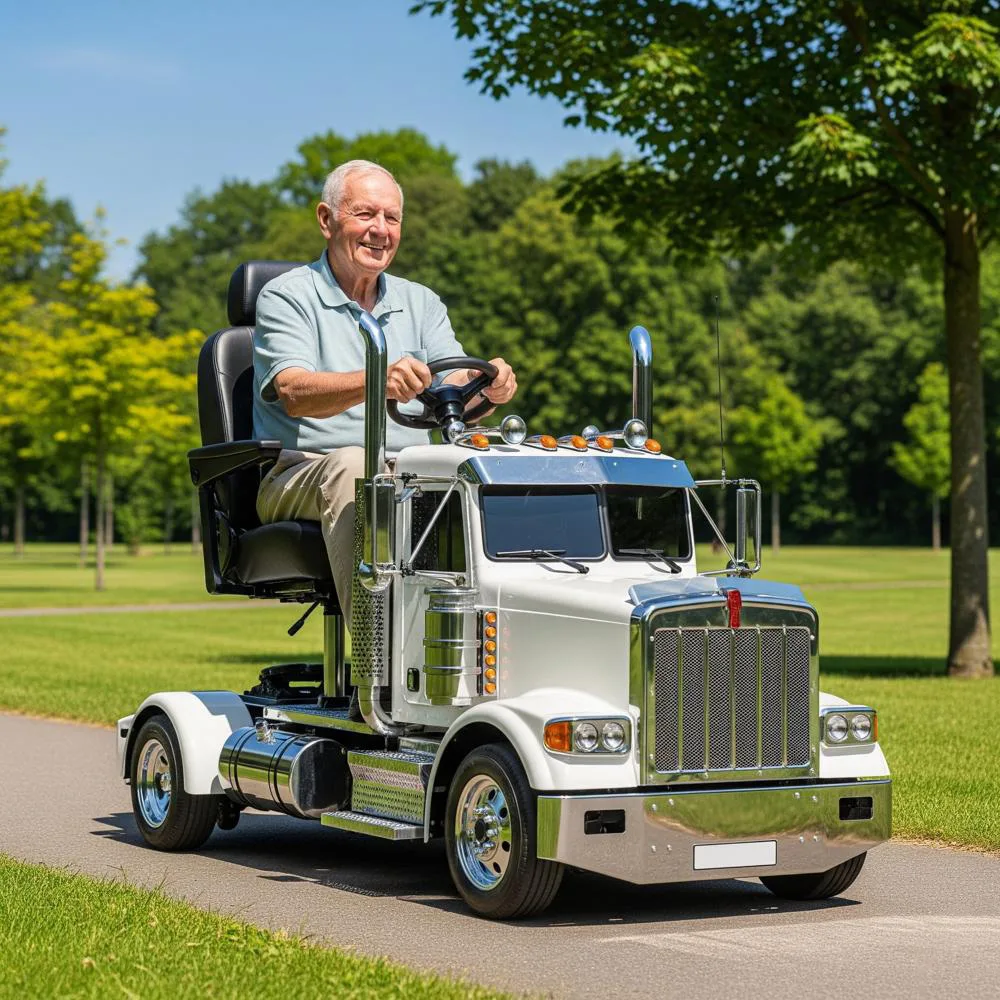
The paramount consideration for any semi truck mobility scooter involves its portability and storage requirements. Professional drivers must balance performance needs with the practical limitations of truck cab space. The ideal scooter should disassemble quickly without tools and store compactly within available space.
Storage solutions vary among different truck configurations. Drivers with spacious sleeper compartments may accommodate larger units, while those operating day cabs require maximum portability. Some drivers utilize external storage boxes or modify their trucks to accommodate mobility equipment, though these solutions require careful consideration of weight distribution and legal compliance.
Battery removal capability enhances portability by reducing individual component weight and enabling separate charging. Removable batteries also provide backup power options and simplified maintenance procedures.
Battery Life and Charging Options
Battery performance directly impacts the practical utility of semi truck mobility scooters. Professional drivers require reliable power systems that can support multiple uses between charging opportunities. Modern lithium ion batteries offer superior performance compared to traditional lead acid alternatives, providing longer range, faster charging, and reduced weight.
Charging flexibility becomes crucial for drivers spending extended periods away from home. Scooters equipped with standard household chargers enable charging at truck stops, motels, and other locations with standard electrical outlets. Some models offer 12 volt charging capabilities, allowing drivers to charge directly from their truck’s electrical system during driving periods.
Smart charging systems prevent overcharging and extend battery life by automatically switching to maintenance mode when full charge is achieved. Battery level indicators help drivers monitor remaining power and plan charging schedules accordingly.
Weight Capacity and Durability
Professional drivers require mobility scooters capable of supporting their weight while withstanding the rigors of constant travel and varied environmental conditions. Weight capacity specifications should provide adequate margin above the user’s weight to ensure safe operation and prevent premature component wear.
Durability considerations extend beyond simple weight support to include resistance to vibration, temperature extremes, and exposure to road salt and other corrosive substances. Quality construction materials and protective coatings help ensure reliable performance throughout the demanding trucking environment.
Frame materials typically include aluminum alloy or steel construction. Aluminum offers superior corrosion resistance and reduced weight, while steel provides enhanced strength and durability. The choice between materials often depends on specific usage requirements and portability priorities.
Safety Considerations and Regulations
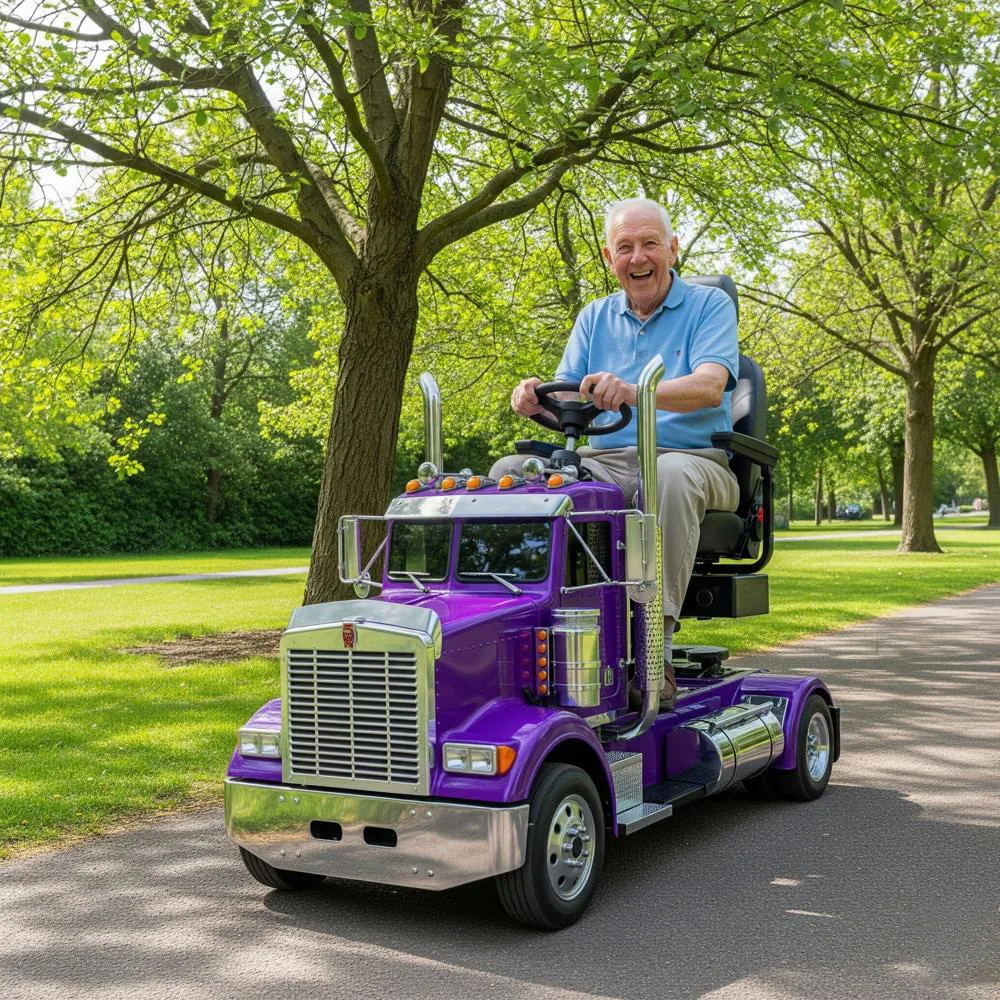
DOT Compliance and Documentation
Professional drivers must ensure their mobility equipment complies with Department of Transportation regulations and company policies. While personal mobility devices generally fall outside commercial vehicle regulations, proper documentation and compliance verification help prevent complications during inspections or enforcement encounters.
Some trucking companies require notification or approval before drivers transport personal mobility equipment. Company policies may specify storage requirements, tie down procedures, or insurance considerations. Drivers should review their employment agreements and company handbooks to understand applicable requirements.
Medical certification documentation may prove valuable during DOT physical examinations or enforcement encounters. Physician statements regarding mobility needs and equipment requirements can help demonstrate legitimate medical necessity and compliance with Americans with Disabilities Act provisions.
Proper Securing and Transport
Secure storage and transport of mobility scooters within commercial vehicles requires careful attention to weight distribution, tie down procedures, and access safety. Improperly secured equipment can shift during transit, creating safety hazards or equipment damage.
Professional grade tie down straps and anchor points ensure equipment remains secure during normal driving conditions and emergency maneuvers. Drivers should inspect securing systems regularly and adjust tension as needed to maintain proper restraint.
Weight distribution considerations become particularly important for drivers operating near maximum legal weight limits. Mobility equipment adds both weight and potentially affects vehicle balance, requiring careful consideration during load planning and weight distribution calculations.
Insurance and Liability Considerations
Professional drivers should verify insurance coverage for personal mobility equipment and understand liability implications associated with its use. Commercial vehicle insurance policies may or may not cover personal property, and separate coverage might be necessary to protect valuable mobility equipment.
Liability considerations include potential responsibility for property damage or personal injury resulting from mobility scooter operation. While these devices typically operate at low speeds in controlled environments, accidents can occur and drivers should understand their potential legal exposure.
Some insurance providers offer specialized coverage for mobility equipment used by commercial drivers. These policies may provide comprehensive protection including theft, damage, and liability coverage specifically tailored to the unique risks associated with over the road trucking.
Popular Brands and Models
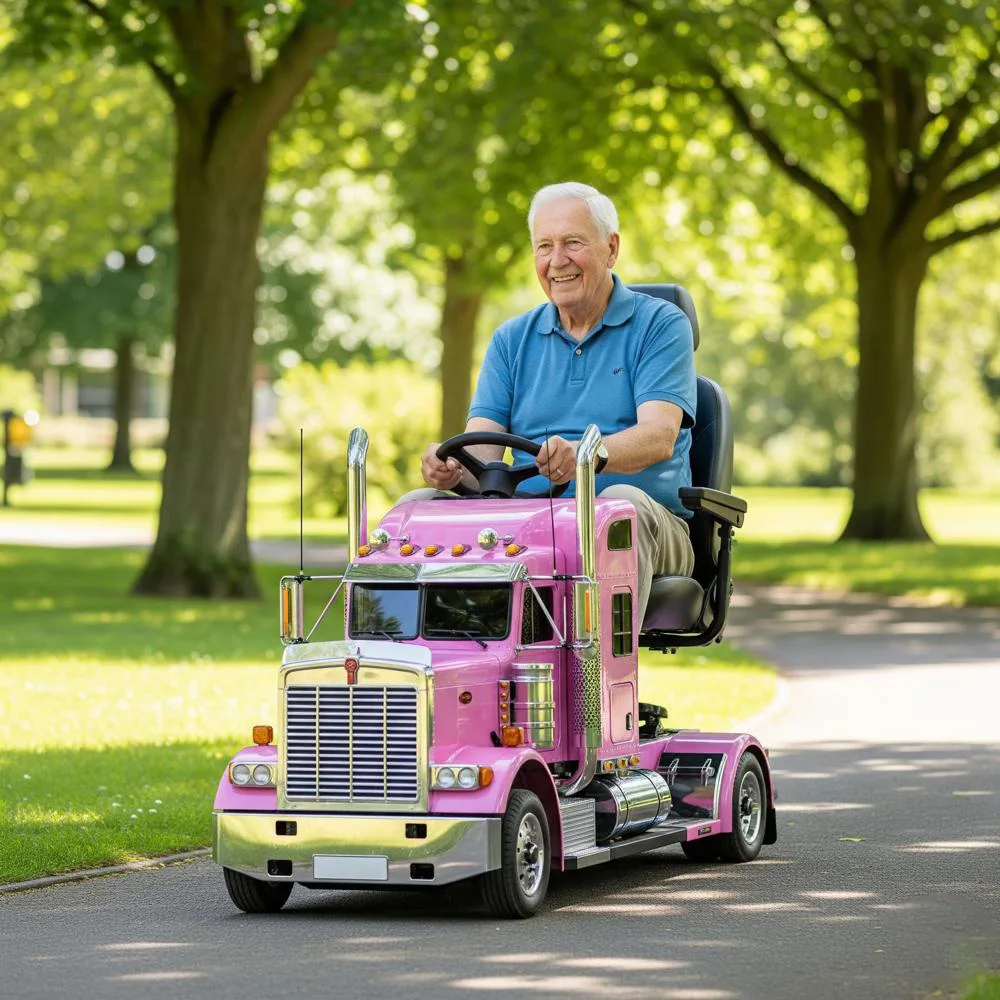
Pride Mobility Solutions
Pride Mobility has established a strong reputation in the mobility industry with several models well suited for professional drivers. The Go Go series offers exceptional portability with quick disassembly features and lightweight construction. These models typically weigh between 34 to 44 pounds and disassemble into easily manageable pieces.
The Pride Victory series provides enhanced performance and durability while maintaining reasonable portability. These models feature improved suspension systems and higher weight capacities, making them suitable for drivers requiring more robust performance characteristics.
Pride’s reputation for reliability and customer service makes their products popular among professional drivers who cannot afford equipment failures during critical work periods. The widespread availability of service centers and replacement parts provides additional confidence for long distance travelers.
Drive Medical Products
Drive Medical offers several mobility scooter lines designed for portability and performance. The Scout series provides excellent value with reliable performance and competitive pricing. These models feature simple disassembly procedures and compact storage dimensions suitable for truck cab environments.
The Bobcat series represents Drive Medical’s premium offering with enhanced performance, durability, and comfort features. These models include improved seating, enhanced suspension, and superior build quality designed to withstand demanding usage patterns.
Drive Medical’s focus on healthcare applications ensures their products meet high reliability and safety standards. The company’s extensive distribution network provides good parts availability and service support across the country.
Golden Technologies
Golden Technologies specializes in high quality mobility products with several models appropriate for professional driving applications. The Buzzaround series offers outstanding portability with innovative design features that simplify disassembly and storage procedures.
The LiteRider series provides enhanced performance and comfort while maintaining excellent portability characteristics. These models feature improved seating systems, better suspension, and superior build quality compared to entry level alternatives.
Golden Technologies’ reputation for innovation and quality construction makes their products popular among users requiring reliable daily transportation. The company’s focus on user comfort and convenience results in products well suited for the demanding requirements of professional drivers.
Maintenance and Care Tips
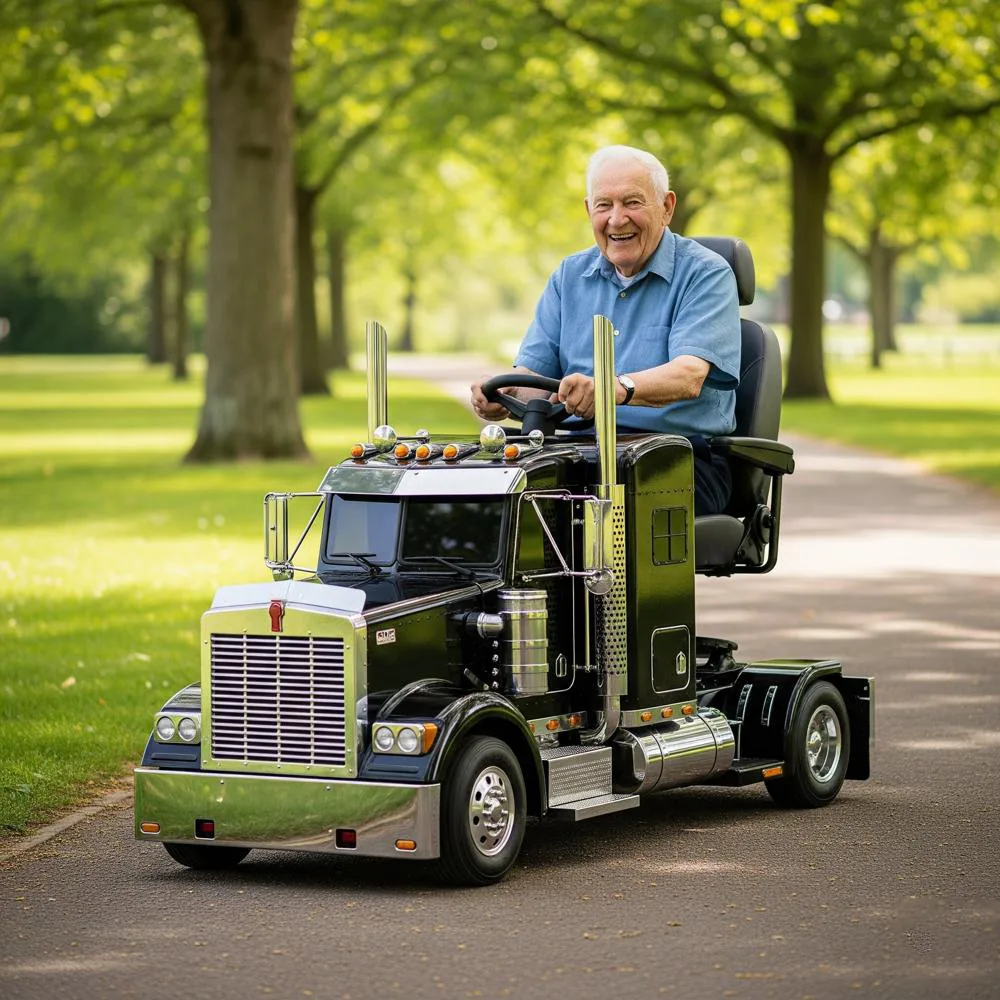
Regular Inspection Procedures
Professional drivers must maintain their mobility equipment in optimal condition to ensure reliable performance during critical work activities. Regular inspection procedures should include visual examination of frame components, wheel condition, battery connections, and control systems.
Tire pressure and tread condition require regular attention, particularly given the varied surface conditions encountered in trucking environments. Proper tire inflation ensures optimal performance and prevents premature wear, while adequate tread depth provides necessary traction on smooth and textured surfaces.
Electrical connection inspection prevents performance issues and potential safety hazards. Loose connections can cause intermittent operation or complete failure, leaving drivers stranded in potentially dangerous situations. Regular cleaning and tightening of electrical connections helps maintain reliable operation.
Battery Maintenance
Battery maintenance directly impacts the reliability and longevity of mobility scooter systems. Proper charging procedures, storage conditions, and maintenance practices significantly extend battery life and ensure consistent performance.
Lithium ion batteries require different maintenance procedures compared to traditional lead acid types. While lithium batteries generally require less maintenance, proper charging practices and temperature considerations remain important for optimal performance and longevity.
Regular cleaning of battery terminals prevents corrosion and ensures reliable electrical connections. Protective sprays and terminal protectors help prevent corrosion in harsh environmental conditions commonly encountered in trucking applications.
Weather Protection
Exposure to weather elements can damage mobility equipment and compromise performance. Professional drivers must implement protection strategies to shield their equipment from rain, snow, extreme temperatures, and road salt exposure.
Waterproof covers provide essential protection during storage and transport. Quality covers resist tearing and provide secure attachment points to prevent loss during transit. Some covers include ventilation features that prevent condensation buildup while maintaining weather protection.
Storage location selection within the truck can significantly impact weather exposure. Interior storage provides maximum protection but consumes valuable living space. External storage requires enhanced weather protection but preserves interior space for other uses.
Cost Considerations and Financing Options
Initial Purchase Costs
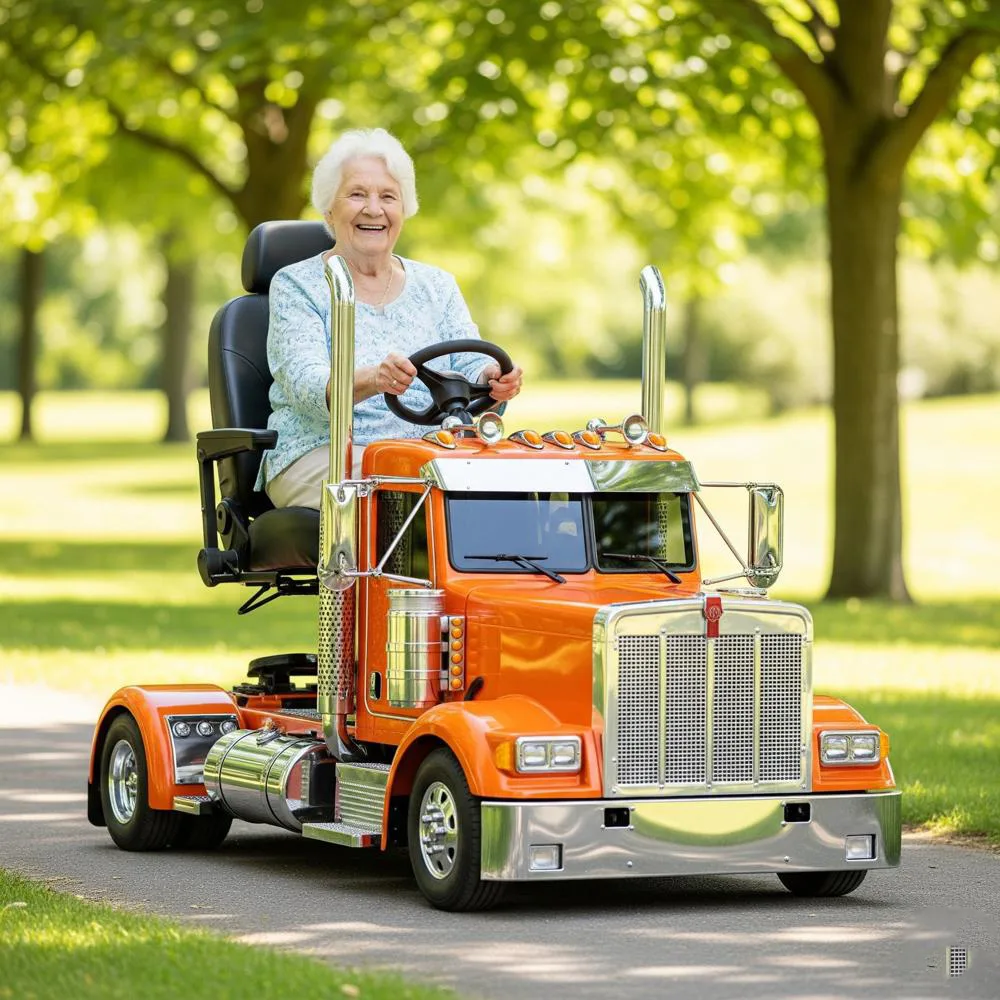
Semi truck mobility scooters range in price from approximately $800 for basic lightweight models to over $3000 for premium heavy duty units. The significant price variation reflects differences in performance, durability, features, and construction quality.
Budget conscious drivers can often find suitable solutions in the $1200 to $1800 range that provide good performance and reliability without premium features. These mid range models typically offer adequate portability, reasonable performance, and acceptable durability for most professional driving applications.
Premium models justify their higher costs through enhanced performance, superior construction, advanced features, and longer service life. Professional drivers who rely heavily on their mobility equipment may find the additional investment worthwhile for improved reliability and performance.
Insurance Coverage Options
Many health insurance plans provide coverage for mobility equipment when prescribed by physicians for medical necessity. Professional drivers should explore coverage options through their health insurance providers to potentially offset equipment costs.
Medicare and Medicaid programs may provide coverage for qualified mobility equipment under specific circumstances. Eligibility requirements and coverage limitations vary, but significant cost savings may be possible for qualified individuals.
Some trucking companies offer assistance or reimbursement programs for drivers requiring mobility accommodations. These programs recognize the value of retaining experienced drivers and may provide financial assistance for necessary equipment purchases.
Financing and Payment Plans
Many mobility equipment dealers offer financing options to help drivers manage the cost of necessary equipment. These programs may include promotional interest rates, extended payment terms, or lease options that reduce initial financial requirements.
Credit requirements for mobility equipment financing are often less stringent than traditional lending, recognizing the essential nature of the equipment for employment purposes. Some programs specifically cater to individuals with disabilities or medical conditions requiring mobility assistance.
Rent to own programs provide alternative financing for drivers who may not qualify for traditional financing options. While these programs typically result in higher total costs, they offer accessibility for drivers facing immediate mobility needs without available capital.
Future Trends in Mobility Technology
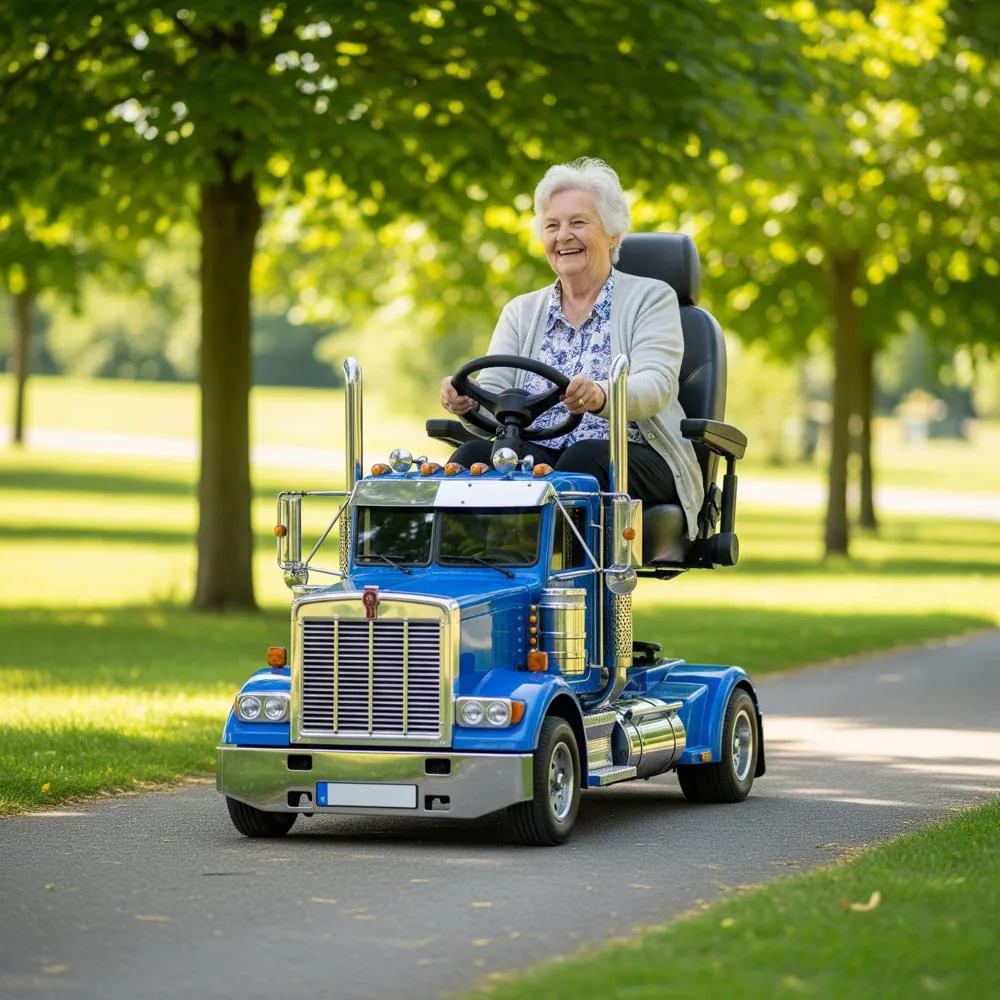
Advanced Battery Technologies
Emerging battery technologies promise to revolutionize mobility scooter performance and convenience. Solid state batteries offer potential improvements in energy density, charging speed, and safety compared to current lithium ion technology. These advances could result in lighter, longer range mobility scooters with faster charging capabilities.
Wireless charging systems are being developed that could eliminate the need for physical charging connections. These systems would allow drivers to charge their mobility equipment simply by parking in designated areas equipped with wireless charging infrastructure.
Solar integration possibilities could provide supplemental charging capabilities for drivers spending extended periods in sunny climates. While complete solar power may not be practical, supplemental solar charging could extend operating range and reduce dependence on grid electricity.
Smart Technology Integration
Internet connectivity and smart technology integration are expanding mobility scooter capabilities beyond basic transportation. GPS tracking systems could provide theft protection and location services for drivers in unfamiliar areas.
Smartphone integration allows remote monitoring of battery status, performance parameters, and maintenance requirements. These systems could alert drivers to potential issues before they result in equipment failures or safety hazards.
Predictive maintenance systems could analyze usage patterns and component wear to recommend maintenance schedules and predict potential failure points. This technology could help professional drivers avoid unexpected breakdowns during critical work periods.
Enhanced Portability Solutions
Ongoing design innovations continue to improve mobility scooter portability without sacrificing performance. Advanced materials and manufacturing techniques enable lighter, stronger construction that reduces weight while maintaining durability.
Automated folding systems could eliminate manual disassembly procedures, allowing drivers to quickly deploy or store their mobility equipment with minimal physical effort. These systems could be particularly valuable for drivers with limited upper body strength or dexterity.
Modular design concepts could enable customization of mobility equipment to match specific driver needs and truck configurations. Interchangeable components could allow drivers to optimize their equipment for different operating conditions or requirements.
Conclusion
Semi truck mobility scooters represent a transformative solution for professional drivers facing mobility challenges, enabling them to maintain their careers while ensuring safety and independence on the road. The evolution of portable, durable, and efficient mobility solutions specifically designed for the trucking environment has opened new possibilities for drivers who might otherwise be forced to leave their profession due to physical limitations.
The diverse range of available options ensures that drivers can find solutions matching their specific needs, whether prioritizing maximum portability, enhanced performance, or specialized features. From lightweight foldable models perfect for day cab operations to heavy duty units capable of handling demanding industrial environments, the current market offers solutions for virtually every professional driving situation.
Success with semi truck mobility scooters requires careful consideration of individual needs, truck configurations, and operational requirements. Proper selection, maintenance, and operation ensure reliable performance and maximum benefit from these essential mobility tools. As technology continues advancing, future developments promise even greater convenience, performance, and integration possibilities for professional drivers requiring mobility assistance.
The investment in quality mobility equipment pays dividends through continued employment opportunities, enhanced independence, and improved quality of life for professional drivers. With proper planning and selection, semi truck mobility scooters enable drivers to overcome physical challenges and continue contributing to the essential transportation industry that keeps America moving.
